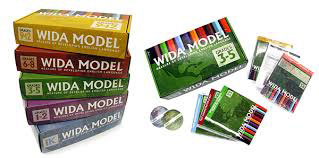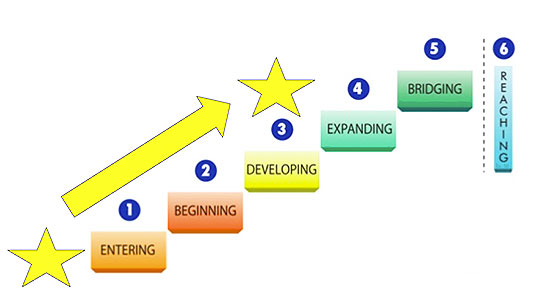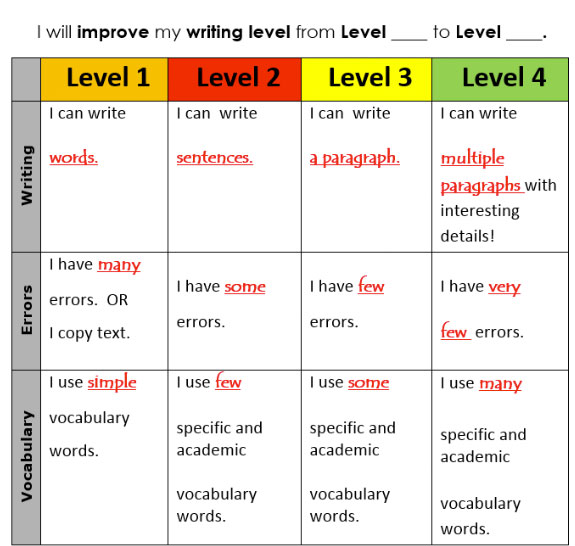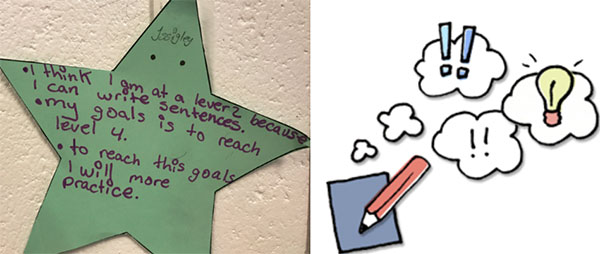There’s always such a positive energy at the start of the school year. As teachers, we know where we want to go and where we want to take our students. So much is possible. As the year progresses, it’s not uncommon for that enthusiasm to wane. Getting students invested in these goals and establishing checkpoints throughout the year can help keep the momentum going — and it creates a real partnership between teachers and students.
I teach at ENLACE, a newcomer academy within Lawrence High School that serves students who have been in the country for less than two years and are at the earliest stages of English language development. Our mission is to engage students in language learning such that they reach an intermediate level of language within the school year. This is an ambitious goal, but made more feasible by investing students in taking ownership over their goals and their own learning, particularly around their English language development. This process can be broken down into seven steps:

1. Find a tried and true assessment that gets at the core of your language development goals. At ENLACE, we use the WIDA MODEL, which measures students’ language proficiency in the four domains of speaking, listening, reading, and writing. Give this test at the start of the year to set a baseline. (See wida.us for more information.)
2. Set an ambitious, yet realistic goal — something to work toward all year. At ENLACE, where all of our students start at a Level 1, our goal is to reach a Level 3 language proficiency. This goal can and should be tailored to reflect the needs of your students, class, and content area. Perhaps you set a goal around the state standardized math assessment. Or maybe you set a more specific goal, and choose to focus on writing growth. Whatever you choose, make this visible!

3. Use corresponding assessment tools and make them student friendly. One clear example of this is writing. The WIDA MODEL includes a very comprehensive rubric to score writing. Why keep that a secret? By making the rubric student-friendly, we make it accessible. Students are now aware of the criteria against which they are assessed. If students cannot understand the criteria, they can’t own it.

Writing Rubric of the WIDA Consortuim (partial)

4. Model how to use the assessment tools with students. In the case above, it’s not enough to simply provide students with a student-friendly version of the rubric. They must see it used in action. By engaging students in this process, they develop greater familiarity with the rubric. They begin to internalize the criteria and develop reference points. Even greater, they see their own work and their peers own work. They see their growth as a community.


5. Refer to goal and assessment criteria in class. Essentially, the idea here is to make Step 4 a daily routine. There’s no need to wait until a final project to practice using the criteria. These are elements or features that students can — and should — be using every day. Practice makes better!
6. Administer your assessment again. At ENLACE, we use the WIDA MODEL quarterly to keep tabs on students’ progress. But this is where teachers should be flexible given the parameters of their unique settings. These work well as quarterly assessments, but might not be too meaningful if administered only twice during the school year.
7. Reflect and goal set. After the assessment, use the data to engage students in reflection and goal setting. Ask students, “How did we do?” “What steps can you take to improve before the next assessment?” Post these goals and make them visible. Refer to them during instruction to keep them alive.

In my experience, this process has not only helped students to reach their goals (in the past three years, 70% of students have reached Level 3!). It has also invested them in those goals and the process has helped to build independence and ownership over their learning. And that’s something they can carry with them when they leave my classroom.






